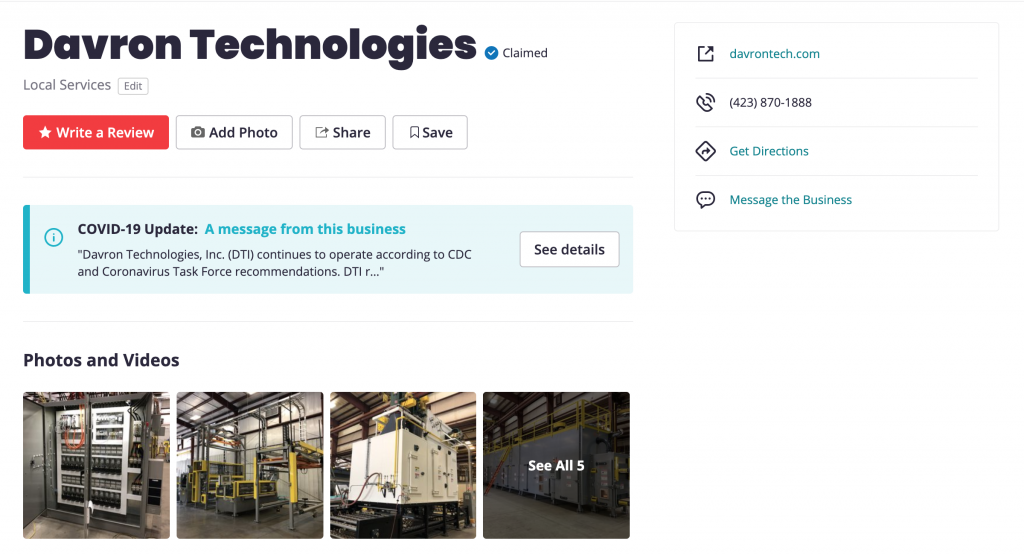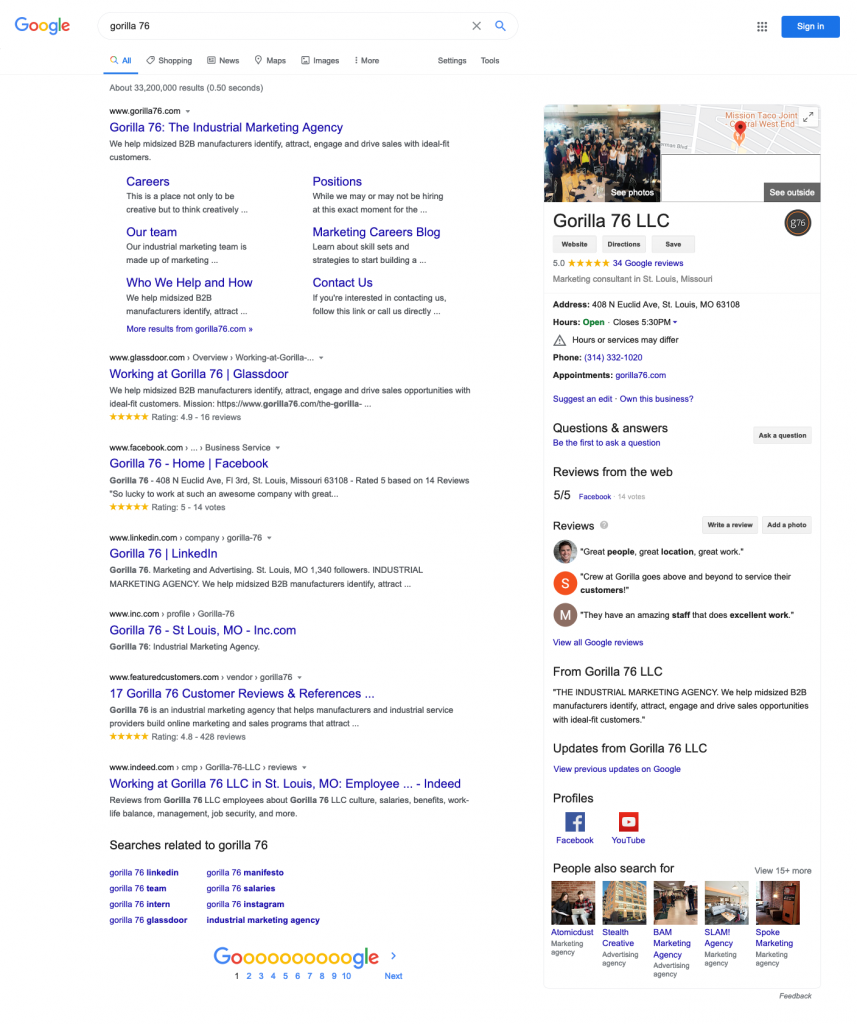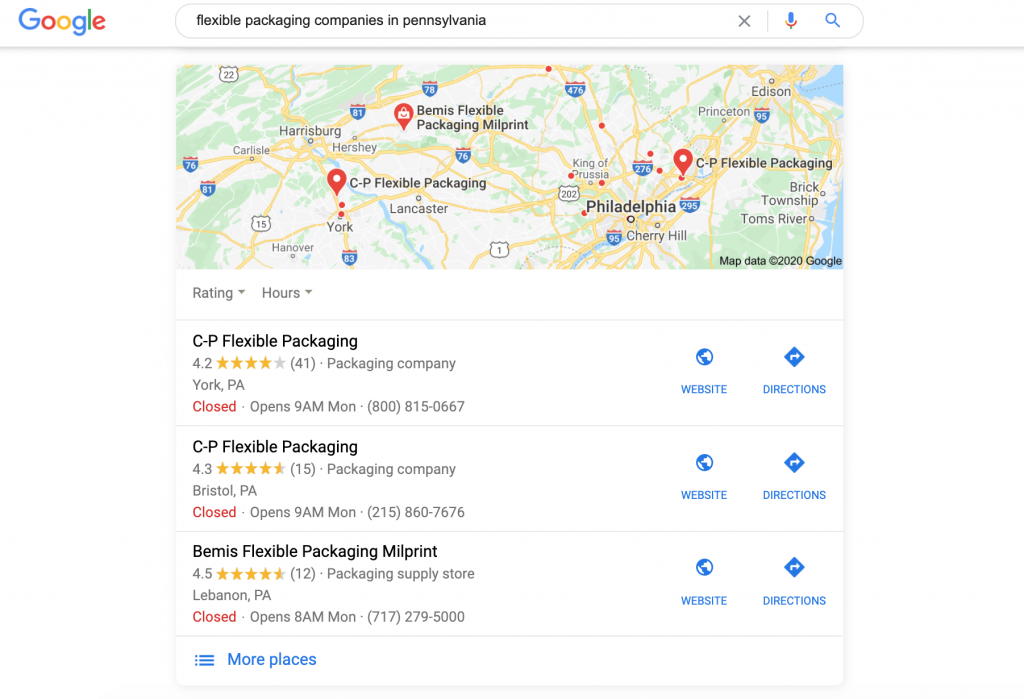
What do people see when they Google your company name?
Your website, right? Yeah … that’s a given. Of course they’re seeing your website. Unless something is seriously wrong with it, that is. In which case, get a professional on it pronto.
But I’m not just talking about your website here. Sure, it’s the most important digital asset you own, but that’s exactly the point — you own it. You completely control the messaging, the content, the images. Everything is filtered through your perspective, as it rightfully should be. (However, if everything on your website is about you rather than about your customers and their problems, perhaps it’s time to think about rehabbing your site.)
No, I’m talking about all of your digital properties, including the company profiles you have on other websites. Some of them you may already own and some of them you may have never even known about, let alone thought about.
I’m talking about your online reputation.
What is branded search?
Branded search is exactly what it sounds like: someone searching for your company name or the name of your proprietary product(s) online.
For better or for worse, your potential customers, investors, job prospects or partners/vendors are doing due diligence with their research. If they already know you, they’re Googling your company to learn more. And they’re not just going to your website. They’re getting other opinions, checking out what others say about you.
And what if they don’t like what they find?
Chances are, they’ll turn elsewhere. They’ll go from high intent and high interest to a lost cause.
You can brag all you want about your company in person, on the phone, in an email, but if your online presence as a whole tells a different narrative, then it’s:

So, I’ll ask again. What do people see when they Google your company name? Go ahead, open a new tab and do it yourself.
Here’s our first SERP (search engine results page). Your results will probably look somewhat similar.
Maybe your results include a profile piece from a local newspaper or industry publication. In which case, congrats!
Maybe there’s a competitor bidding on your name as a keyword with Google Ads and showing up above your website. In which case:
- Shame on them.
- It might be time to spend some money on a branded Google Ads campaign yourself. Here’s how to set up an Ads account if you don’t already have one.
Maybe you searched for a shortened version of your name that’s shared by another company and their results outrank yours. In which case, if you want to stand a chance of competing here, the best way is to work on building the authority of your domain. We recommend doing so through guest publishing where it matters most.
Maybe there’s some regrettable news from the past that shows up with your branded search. In which case, there’s some work to do to reclaim your reputation. Some of the following recommendations can help in that process.
Regardless of what the SERPs for your branded search look like, here are a few things you should know about the results and how you can get the most out of your digital properties.
Your website
Your website’s homepage will likely be one of the first results for a branded search. Attached to the result will be the page’s title tag, the meta description and potentially a set of site links.
Since this is your chance to make your website shine on the SERP, it’s best to do some basic SEO work.
If your current title tag and meta description aren’t ideal, you can update them using a simple SEO tool. A free plugin like Yoast is the way to go if your site is built on WordPress.
Title tag
Make sure this includes your company name at the start, followed by a quick summation of what you provide. You have about 50-60 characters to work with here, so make sure you keep it brief.
Meta description
This is where you can expand on the title’s quick summary and give more context for the searcher. Again, this needs to be brief (typically under 160 characters). One note, Google may occasionally automatically populate meta descriptions themselves and take your set description as more of a suggestion.
Site links
These may also be extended out with a quick “mini-meta description” (as they are in the Gorilla 76 SERP example). Unfortunately, there’s really no way to completely control what links Google shows here. A lot of it comes down to the popularity of the pages on your site.
Google My Business profile
 Unless your company is brand spanking new, you more than likely already have a Google My Business listing. You’re probably just not using it to its fullest. If the listing isn’t claimed and owned by a member of your company, someone should claim and verify it.
Unless your company is brand spanking new, you more than likely already have a Google My Business listing. You’re probably just not using it to its fullest. If the listing isn’t claimed and owned by a member of your company, someone should claim and verify it.
Once claimed and verified, it’s time to optimize the listing to make sure all of the information is accurate and complete. Add or edit your logo, images, a business description, your business hours, website links, products/services and look into what reviews you have (if any).
Reviews play an essential role in optimizing the listing as they can either attract or deter interested parties. The quality and quantity of reviews are key. If you only have a few, or if they are generally negative, consider running a review campaign. Pick some of your best customers or vendors (avoid employees here) and shoot them an email requesting they write you a review and post it. Chances are they’ll be more than willing to help out. You can also respond to their reviews (and those of others — both good and bad) on Google, giving further context for anyone who might read through them.
An optimized Google My Business profile is imperative in this day and age. Not only does the listing come up for branded searches, but it can also come up during more localized searches.
When people search things like:
- “[your service] near me”
- “[your product] [your location]”
- “best [your service] companies in [your location]”
Google adds a SERP feature called a Local Panel that includes a map near the searcher’s location as well as three relevant businesses. An optimized listing is more apt to show up in this feature.
Job boards
Yes, I’m talking about Indeed and Glassdoor here. Like it or not, these sites aren’t just used by potential employees.
Recently, a company I work with who is in acquisition mode had a meeting with a potential selling company. The meeting seemed to go well, but then the other company did some online research. Needless to say, the acquisition didn’t go through due in part to a few rogue employee reviews on job boards.
Have HR claim your company profiles on these job boards and fill them out to the best of their abilities. Add photos that accurately represent the culture, list relevant information on benefits, etc. And respond to reviews in an appropriate and sensitive manner.
This is another instance where a review campaign could come in handy — this time only employees. Don’t feel the need to incentivize employees in any way, just shoot them an email kindly requesting that they consider leaving an honest review.
Social media
No, I’m not saying you need a company account for Pinterest or Snapchat or TikTok or Flim Flam or whatever new app the kids are on these days. Unless you want to be. In which case, more power to you.
But if you’re on LinkedIn or Facebook, that counts. Beef up your company profile with more detailed information. Share a few updates every once in a while. Aim to gain a few more likes or followers every month or two. Your follower or like counts shouldn’t be KPIs, but potential customers or employees do see those stats and may subconsciously allow them to sway their opinions on a company.
Although our recommendation at Gorilla is to primarily use LinkedIn on a more personal level to broaden reach, an updated company profile looks more natural if you’re considering running Sponsored Posts through LinkedIn advertising. The same goes for Facebook. I’ve seen comments on Facebook ads before that mention the fact that the ad is new, but the company profile page hasn’t been updated in years. 🤔 You don’t want to be that company.
Directory & review sites
Hot take: Don’t pay for directories. They’re not worth the investment. That said, your company is probably on several free directory sites already. Some of these are more relevant and of a higher quality than others, but if they’re showing up in branded searches, you may as well take advantage of them.
The more general directory sites include Thomasnet®, Manta and Yelp. Yep, you read that right, Yelp. And before you say anything about Yelp being primarily for B2C companies, again, chances are you’re actually already on it as a result of data aggregators. Oh, and did I mention that Apple Maps tends to pull data from Yelp? So if someone is looking up directions to your office, the information they’re seeing (category, hours, etc.) on their phone is typically from that site.
Have a company representative take ownership of these existing directory listings. Add business descriptions, contact information, photos, appropriate categories. If no exact match category is to be found, use a more general category like Davron did for their Yelp page.

Online reputation is an ongoing process, and we recommend monitoring brand mentions with a tool like Google Alerts. (Pro tip: use quotation marks around your company name for more accurate results.) But taking some time to tackle the low-hanging fruit listed above is an excellent place to start.
If you have any questions about any of this, please feel free to send me a message.
And if you’d like us to audit your online presence or need any help with improvements, send us a note using the form below.


